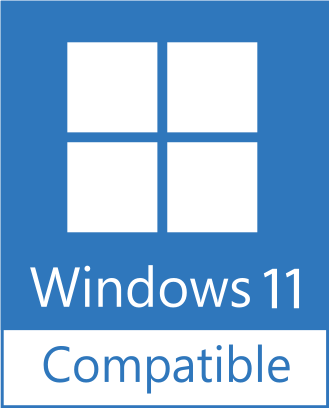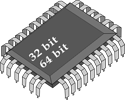
Scientists have been examining animal behavior characteristics and their associations with animal productivity. However, until the recent advances in RFID systems, it was difficult to evaluate behavioral traits in large groups of animals. Computerized systems that use RFID-based technologies allowed more animals to be evaluated at one time, and facilitate the measurement of unique animal characteristics. With automatic system that collect feeding behavior data we can better evaluate early detection of respiratory diseases, metritis, ruminal acidosis and strategies to improve bunk management. More recently, the associations between feeding behavior and feed intake traits, which includes residual feed intake, have been examined to increase the understanding of factors that influence animal variation in feed efficiency of beef cattle (Nkrumah et al., 2007; Bingham et al., 2009; Kelly et al., 2010; Mendes, 2010; McGee et al., 2014). To increase our understanding between the relationship of animal behavioral factors and animal production traits, the Meal Criterion Calculation (MCC) software was develop.
The MCC software is based on studies from Tolkamp and Kyriazakis (1999a, b), Yeates et al. (2001), Yeates et al. (2002), and Bailey et al. (2012), and was designed to analyze cattle feeding behavior data collected by the GrowSafe System (Grow Safe LTD. - Airdrie, Alberta - Canada). The software computes animal bunk visit interval (BVI), and meal criterion (MC), where the BVI is the time interval between two visit to the feed bunk, and the MC is the longest BVI that defines a meal event. A meal event is by definition a cluster of bunk visit events where the BVI is within the MC value, it can be distinguished from the next meal event by a BVI interval that exceeds the value of the MC. In other words, to compute one meal event we cluster animal bunk visits until a BVI exceeds the MC value, when the BVI exceeds the MC, then we start to compute a new meal event. To stablish the MC, the MCC model calculates the intersection of two distributions: the non-feeding time within a meal and the non-feeding time between meals, in other words the intersection between short and long BVI. MCC works with different distribution forms (normal, gamma, log-normal, Weibull) and with an unlimited number of animals and data records. As the MC is stablished, the meal events can be calculate.
Some scientists have been using a standard value for MC of 5 minutes (300 seconds) to calculate meal events. The MCC allows you the user to change the standard, pre-defined, value of MC, and allows the user to stablish the MC value based on the BVI from each animal, the animal will have its own MC based on his particularly BVI, or within a group of animals. With those options, the user is able to utilize different approaches for animal feeding behavior evaluation, which accounts for variations in animal breeds, environment, diet, and other factors.
References
Bailey, J. C., L. O. Tedeschi, E. D. M. Mendes, J. E. Sawyer, and G. E. Carstens. 2012. Technical Note: Evaluation of bimodal distribution models to determine meal criterion in heifers fed a high-grain diet. J. Anim. Sci. doi: 10.2527/jas.2011-4634
Bingham, G. M., T. H. Friend, P. A. Lancaster, and G. E. Carstens. 2009. Relationship between feeding behavior and residual feed intake in growing Brangus heifers. J. Anim. Sci. 87:2685–2689. doi: doi:10.2527/jas.2009-1851
Kelly, A. K., M. McGee, D. H. Crews, A. G. Fahey, A. R. Wylie, and D. A. Kenny. 2010. Effect of divergence in residual feed intake on feeding behavior, blood metabolic variables, and body composition traits in growing beef heifers. J. Anim. Sci. 88(1):109-123. (Article) doi: 10.2527/jas.2009-2196
McGee, M., C. M. Welch, J. A. Ramirez, G. E. Carstens, W. J. Price, J. B. Hall, and R. A. Hill. 2014. Relationships of feeding behaviors with average daily gain, dry matter intake, and residual feed intake in Red Angus-sired cattle. J. Anim. Sci. 92(11):5214-5221. (Article) doi: 10.2527/jas2014-8036
Mendes, E. D. M. 2010. Characterization of feeding behavior traits and associations with performance and feed efficiency in finishing beef cattle. Master of Science, Texas A&M University, College Station, TX.
Nkrumah, J. D., D. H. Crews, J. A. Basarab, M. A. Price, E. K. Okine, Z. Wang, C. Li, and S. S. Moore. 2007. Genetic and phenotypic relationships of feeding behavior and temperament with performance, feed efficiency, ultrasound, and carcass merit of beef cattle. J. Anim. Sci. 85(10):2382-2390. doi: 10.2527/jas.2006-657
Tolkamp, B. J., and I. Kyriazakis. 1999a. A comparison of five methods that estimate meal criteria for cattle. Anim. Sci. 69:501-514.
Tolkamp, B. J., and I. Kyriazakis. 1999b. To split behaviour into bouts, log-transform the intervals. Anim. Behav. 57:807-817.
Yeates, M. P., B. J. Tolkamp, D. J. Allcroft, and I. Kyriazakis. 2001. The use of Mixed Distribution Models to Determine Bout Criteria for Analysis of Animal Behaviour. J. Theor. Biol 213:413-425. doi: 10.1006/jtbi.2001.2425
Yeates, M. P., B. J. Tolkamp, and I. Kyriazakis. 2002. The relationship between meal composition and long-term diet choice. J. Anim. Sci. 80:3165-3178.
 |
Click here to download the user guide. |
|
|
|
|
|
|||
The current version of the Meal Criterion Calculation is 1.10.8656.18505.
![]()
Previous versions can be downloaded from here.
- The latest script files for MCC can be downloaded below. The use of the latest version is recommended
- Unzip the zip file, rename the "mcc_x-y-z.zzz" to "mcc.zzz" and the "mcc_x-y-z.zzx" to "mcc.zzx", and copy the mcc.zzz and mcc.zzx files to "[User Name]\Documents\TAMU\MCC folder" by replacing the old ones
- Only the mcc.zzz or mcc.zzx files will be used by the MCC software, but you can keep other versions in the same folder (so long you have different file names)
- Version 1.7.9 (August 26, 2021): MCC script 1.7.9
- Version 1.8.0 (May 13, 2023): (MCC script 1.8.0
- Version 1.8.1 (July 3, 2023): MCC script 1.8.1
Once the MCC is installed on a computer, the program will run 10 times before it must be purchased and registered. You can register your copy by submitting the registration number in the Purchase page. Registration codes will not be given out until the cost of registering your copy is paid in full.
Ms. Egleu D. M Mendes |
< | |
Dr. Luis O. Tedeschi |
July 2, 2022. A quick start guide was developed for MCC. Download it here.
July 27, 2018. Modifications were done in the MCC R Script 1.7.2 to include new adjustments to the following non-feeding intervals (also known as bank visit intervals-BVI) errors. Note that the version 1.7.2 is included in the latest version of MCC or it can be downloaded above.
- BVI > 24 h error. BVI values greater than 24 h likely happen because of missing days in the database. In this case, BVI values were re-computed to only include the initial hours of the day. So, MCC assumes that the BVI event started at midnight of the day that had a BVI value greater than 24 h (or 86,400 seconds). The occurrence frequency of this error (known as "NoDays") is recorded and shown in a new bar plot by days on feed and scales (i.e., feed bunks)
- Ghost event errors. A ghost event happens when the current feeding event starts before the end of the previous feeding event. Two ghost event scenarios can occur next:
- Ghost event case 1 (complete overlap). This error occurs when the end of the current feeding event is GREATER than the end of the previous feeding event. The occurrence frequency of this error (known as "Ghost case 1") is recorded and shown in a new bar plot by days on feed and scales (i.e., feed bunks)
- Ghost event case 2 (partial overlap). This error occurs when the end of the current feeding event is LESSER than the end of the previous feeding event. The occurrence frequency of this error (known as "Ghost case 2") is recorded and shown in a new bar plot by days on feed and scales (i.e., feed bunks).
|







